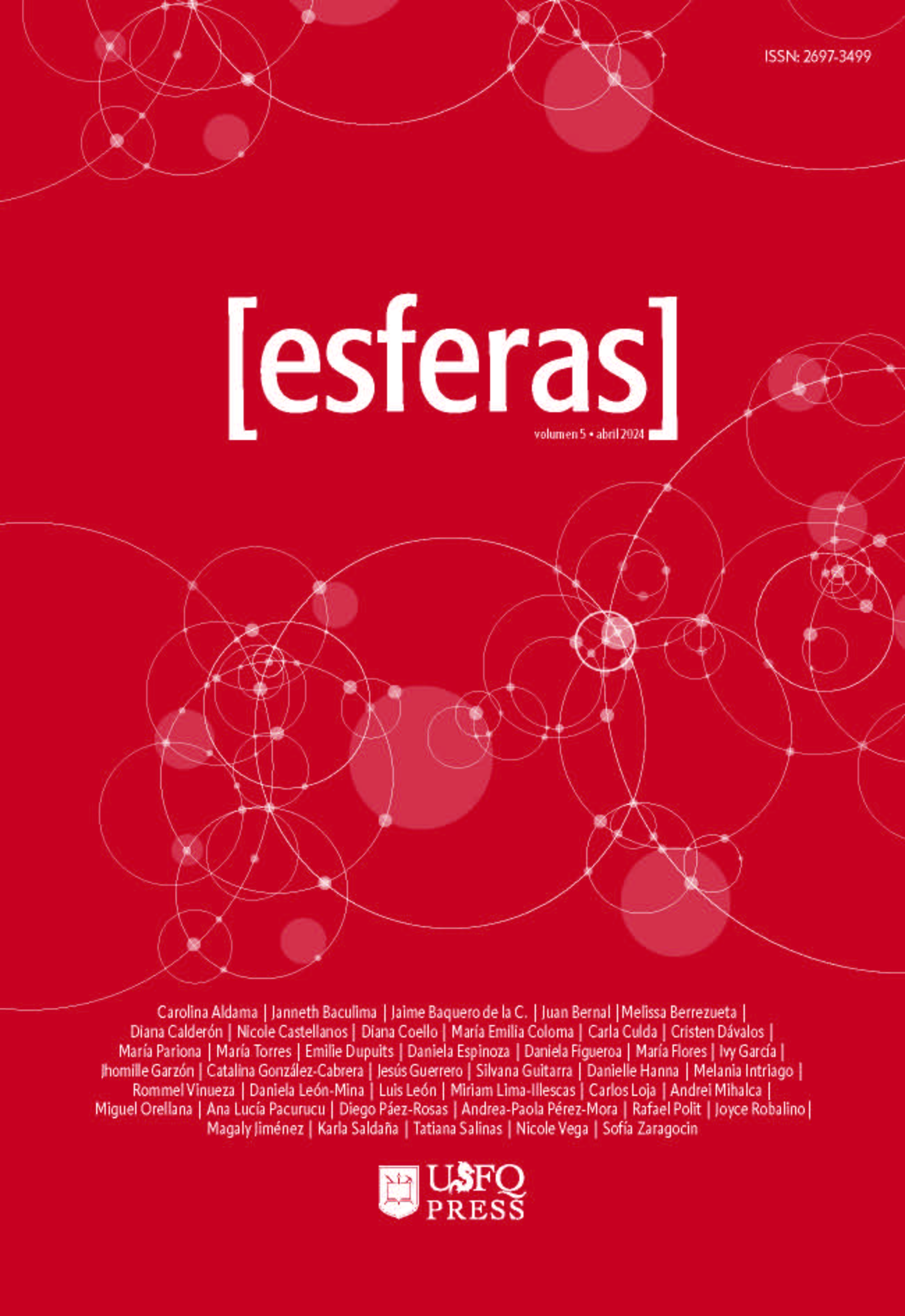Published 2024-04-01
Keywords
- Puppets,
- 911,
- Sexual abuse
How to Cite
Copyright (c) 2024 ana Lucia PAcurucu, Catalina Gonzalez Cabrera, Carlos Loja Liivisaca

This work is licensed under a Creative Commons Attribution-NonCommercial 4.0 International License.
Abstract
The "puppets" project was born in May 2021 as part of a larger project "Narrations for a change", which includes stories and videos to promote the prevention of child abuse, given that this problem is very widespread in our country and that during the COVID 19 pandemic it increased showing the need to work directly with children, so they can ask for help as soon as they detect any dangerous situation, whether they come from other people known or not. This project is linked to the following Sustainable Development Goals (SDGs) 3. Health and well-being, 4. Quality education, 5. Gender equality, 11. sustainable cities and communities and 16. peace, justice and strong institutions. The puppet play was presented in different schools, to children of all ages, it shows how two children "Esthela and Fermin" confront their neighbor "Freddy" when they feel he wants to harm them and ask for help to the police, calling 911 which is the emergency number. The results of this project showed how education is a strong element for long term sustainable development, it was demonstrated that edutainment through the use of puppets increases the intention to ask for help in children, it was also found that the preventive message was acquired in children through the recognition of danger.
Downloads
References
- Echeburúa, E. y Guerricaechevarría, C. (1998). Abuso sexual. En M.A. Vallejo (Coord.), Manual de Terapia de Conducta (pp.563-601). Madrid: Dykinson.
- Espinoza, L. (2018). Técnica de títere en el desarrollo emocional de estudiantes de cinco años en la Institución Educativa “Jesús Nazareno”, Pasco 2018. Escuela de posgrado Universidad César Vallejo. Revisado en abril 4, 2023, recuperado de http://www.takey.com/Thesis_365.pdf
- Feiring, C., Miller-Johnson, S. y Cleland, C. M. (2007). Potential pathways from stigmatization and internalizing symptoms to delinquency in sex-ually abused youth. Child Maltreatment, 12, 220-232.
- Hébert, M., Tremblay, C., Parent, N., Daignault, I. V. y Piché, C. (2006). Correlates of behavioral outcomes in sexually abused children. Journal of Family Violence, 21, 287-299.
- Kroflin, L. (2012). El papel del títere en la enseñanza de lenguas. El poder del títere , 46-62.
- Muela, A., Balluerka, N. y Torres, B. (2013). Ajuste social y escolar de jóve-nes víctimas de maltrato infantil en situación de acogimiento residencial. Anales de Psicología, 29, 197-206.
- Navarrete Zúñiga, G. B., y Sánchez Proaño, M. C. (2022). El impacto de los títeres en la prevención del abuso sexual infantil (Bachelor's thesis, Universidad del Azuay).
- Observatorio Social del Ecuador (2018). Situación de la niñez y adolescencia en el Ecuador, una mirada a través de los ODS.
- OMS. (8 de junio de 2020). Organizacion Mundial de la Salud. Obtenido de https://www.who.int/es/news-room/fact-sheets/detail/child-maltreatment
- Pinasco, G. y Campaña, D. (2020, 13 de julio). Los fantasmas del niño que sufrió abuso sexual por su profesor de educación física. Vistazo. https://www.vistazo.com/seccion/los-fantasmas-del-nino-que-sufrio-abuso-sexual-por-su-profesor-de-educacion-fisica
- Plan Internacional (2021) Informe Sombra al Comité de la Convención sobre la Eliminación de Todas las Formas de Discriminación contra la Mujer https://plan.org.ec/ecuador-registra-alto-promedio-de-denuncias-por-violacion-abuso-y-acoso-sexual/
- Rodriguez, G. (2018, 28 de noviembre). Abuso sexual en menores de edad, problema de salud pública. Revista de la facultad de psicología y Humanidades, (23). http://revistas.unife.edu.pc/index.php/avancesenpsicologia/article/view/171
- Rosa, A. (2019). Teatro de títeres como estrategia para potenciar la atención de niños de 5 años de la Escuela de Educación Básica Isabel Herrera de Velázquez. SciELO Cuba. Revisado en abril 4, 2023, recuperado de http://scielo.sld.cu/scielo.php?script=sci_arttext&pid=S1990-86442019000500370
- Singhal, A., Cody, MJ, Rogers, EM y Sabido, M. (Eds.). (2003). Entretenimiento-educación y cambio social: historia, investigación y práctica . Rutledge.
- Tang, K., Qu, X., Li, C., y Tan, S. (2018). Childhood sexual abuse, risky sexual behaviors and adverse reproductive health outcomes among Chinese college students. Child Abuse & Neglect, 84, 123-130. https://doi.org/10.1016/j.chiabu.2018.07.038
- Tareen, A., Garralda, E.M. y Hodes, M. (2007). Post-traumatic stress disorder in childhood. Archives of Disease in Childhood- Education & Practice Edition, 92, 1-6.
- UNICEF comité Español (2006). Convención sobre los derechos del niño. https://www.un.org/es/events/childrenday/pdf/derechos.pdf
- UNICEF. (2016). Abuso sexual contra niños, niñas y adolescentes. Una guía para tomar acciones y proteger sus derechos. https://www.unicef.org/ecuador/proteccion-AbusoSexual_contra_NNyA-2016_(1).pdf
- Zeinali, H. (2017). Los títeres como herramienta educativa para niños de infantil y primaria. Universidad de Alcalá. Revisado en abril 4, 2023, recuperado de https://ebuah.uah.es/dspace/bitstream/handle/10017/41472/Tesis%20Hossein%20Zeinali.pdf?sequence=1&isAllowed=y

